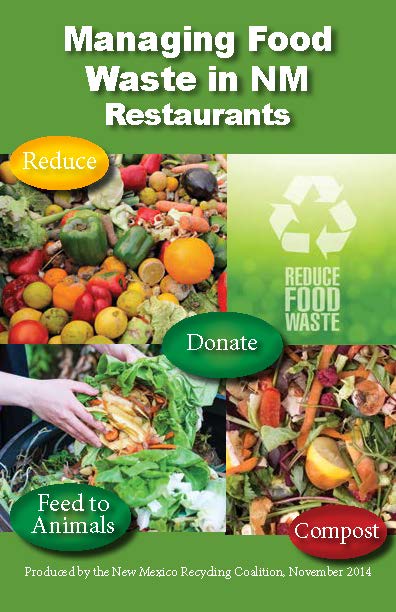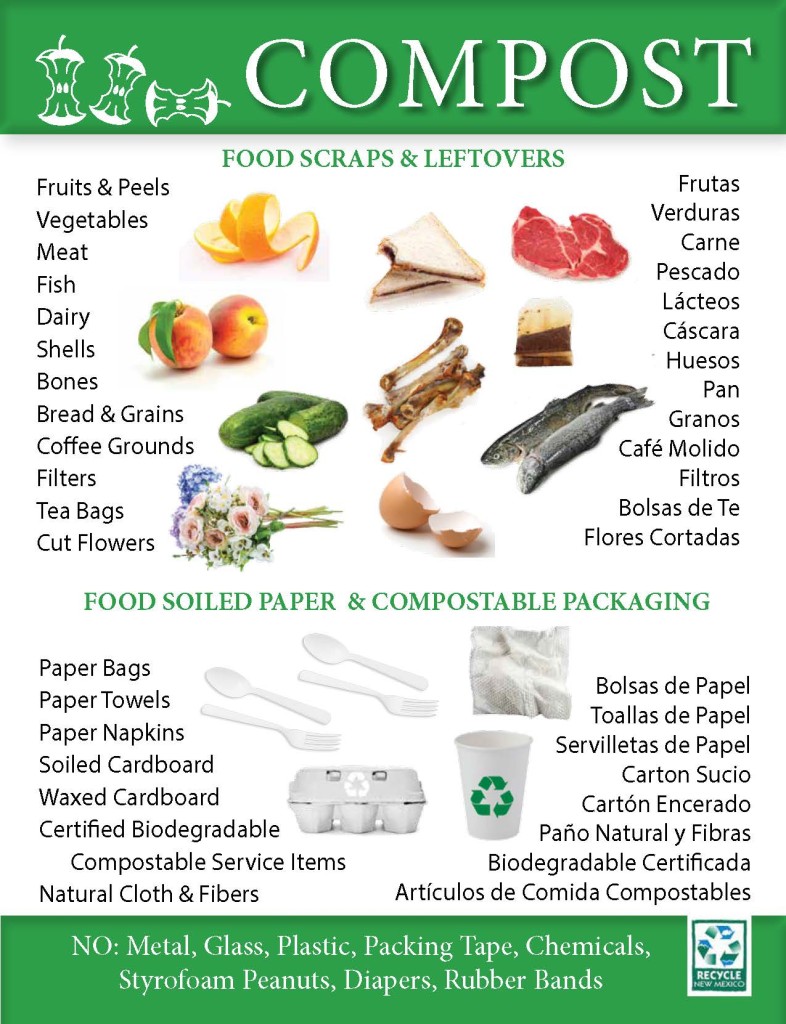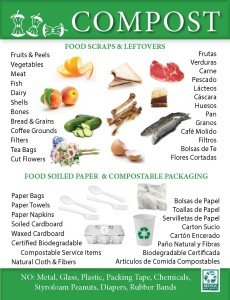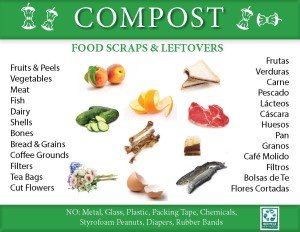Online Resource Guide for Food Waste Management Available
In an effort to bring greater awareness around the subject of food waste and to provide resources to communities food-handling entities so they may wisely manage this material for reduction, donation, animal feed and for composting, the New Mexico Recycling Coalition (NMRC) has compiled best practices for these entities to use to increase the diversion of this material.
Click the links below for online versions of the guide. Print versions available by request.
Managing Food Waste in NM: Restaurants
Managing Food Waste in NM: Grocers
Planning for Communities to Manage and Divert Food Waste
Why Diverting Food Waste Is Critical
An astonishing 40% of food is wasted in the United States each year at an annual cost of $100 billion (US Department of Agriculture). Almost 15% of American households are suffering from hunger. Hungry people do not always know where their next meal will come from and 50 million people do not have access to enough food.
A new movement has started to manage food waste with best management practices to reduce waste, feed the hungry, feed animals and create soil through the composting process. These practices have been raised to a national priority by the US Department of Agriculture (USDA) and the US Environmental Protection Agency (EPA). Both entities designated wise food waste management as one of their top priorities in 2014. National organizations, such as the National Restaurant Association, Grocery Manufacturers Association and the Food Marketing Institute have set their own goals to create educational materials to reduce food waste. Corporations and businesses around the US, such as Walmart, prioritize the management of food waste first for donation and then for composting. In fact, Walmart is one of the largest food donors in the US.
Food represents 14.5% of the waste stream in America (EPA). From an environmental perspective, organic materials, of which food waste is a significant component, disposed of in landfills generate methane, a greenhouse gas that is twenty-one times more potent than carbon monoxide. Additionally, 13% of greenhouse gases in the US are associated with growing, manufacturing, transporting, and disposing of food.
Social Benefits:
-Assisting the Hungry
-Less Wasted Food
-Staff Pride of Food Diversion Efforts
Environmental Benefits:
-Less Food Sent to Landfills
-Reducing Food Waste at the Source
-Less Methane Generated From Food in Landfills
-Conservation of Land & Water
-Building Healthy Soils with Compost
Economic Benefits:
-Possibility of Lowered Disposal Costs
-Decreased Over-Purchasing
-Tax Deduction for Food Donation
-Positive Environmental Image and Commitment
Sign Up For The Food Waste Challenge!
Whether your business is thinking about starting a food waste diversion program or has already launched a program, you can sign up for the Food Waste Challenge and receive resources and recognition for your efforts! Two federal agencies have recognized the importance of wise management of food waste, with both entities working jointly to provide educational materials, advisement and recognition through the EPA and USDA Food Waste Challenge.
Learn more and join at www.epa.gov/smm/foodrecovery/joinnow.htm
Click on the tabs below for more information.
Know What Is In Your Waste Stream
An initial step for any food waste management program is to know what you are throwing away!
- Establish a baseline for measurement and know what kind of food materials your establishment is regularly disposing of.
- Know the costs associated with disposal
- Start a waste log for assessment. www.epa.gov/epawaste/conserve/pubs/food-waste-log.pdf
Free Waste, Energy and Water Audits for any NM Business
A free service offered by the NMSU Institute for Energy and the Environment enables any food-handling entity in NM to request assistance in evaluating and launching a food waste or recycling program.
Chris Campbell, NMSU Institute for Energy and the Environment, 505-843-4251, chriscam@nmsu.edu




